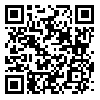BibTeX | RIS | EndNote | Medlars | ProCite | Reference Manager | RefWorks
Send citation to:
URL: http://jdc.tums.ac.ir/article-1-50-en.html

 , Mahmoud Nateghi Rostami
, Mahmoud Nateghi Rostami 
 , Hossein Keshavarz *
, Hossein Keshavarz * 
 1, Akram Miramin Mohammadi
1, Akram Miramin Mohammadi 
 , Minoo Tasbihi
, Minoo Tasbihi 
 , Seyyedeh Tahereh Shahrestani
, Seyyedeh Tahereh Shahrestani 
 , Abdolfattah Sarrafnejad
, Abdolfattah Sarrafnejad 

Background and Aim: The heterogenous population of memory T lymphocytes is distinguished based on surface markers and effector functions such as cytokine secretion. Recently, two subsets of memory T cells are defined by expression of chemokine receptor CCR7 and CD45RA designating as "central memory" T cells (TCM) and "effector memory" T cells (TEM). The objective of this staudy was to evaluate the phenotype and function of these lymphocytes in healed cases of cutaneous leishmaniasis.
Methods: The phenotype of lymphocytes were determined in blood samples of 13 volunteers with history of self healing cutaneous leishmaniasis (HCL) and in 6 healthy controls.
Results: No significant difference was found in memory T cell subsets between HCL volunteers and healthy controls using flow cytometry. However, following sorting of different memory subsets, a significantly higher proliferation was seen in cells of HCL volunteers comparing to the control group. A significantly higher IFN-γ response in TEM and a significantly higher IL-2 response in TCM were observed in cell culture of HCL volunteers comparing controls.
Conclusion: The responses were elicited when the cells were stimulate with SLA in vitro, it is concluded Leishmania-specific TEM and Leishmania-specific TCM subsets exist in HCL volunteers and since the volunteers with history of CL presumed to be protected against reinfection, it seems that both TCM and TEM play role in the protection against Leishmania infection in these individuals.
Received: 2010/09/15 | Accepted: 2010/10/16 | Published: 2013/07/16
| Rights and permissions | |
 |
This work is licensed under a Creative Commons Attribution-NonCommercial 4.0 International License. |



